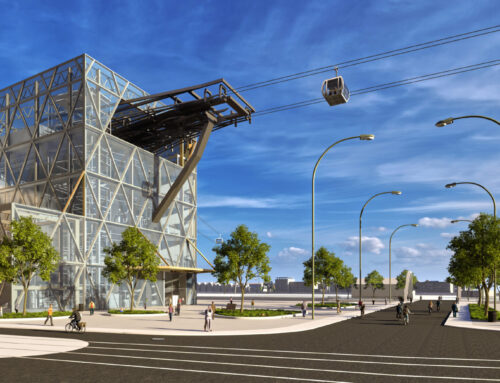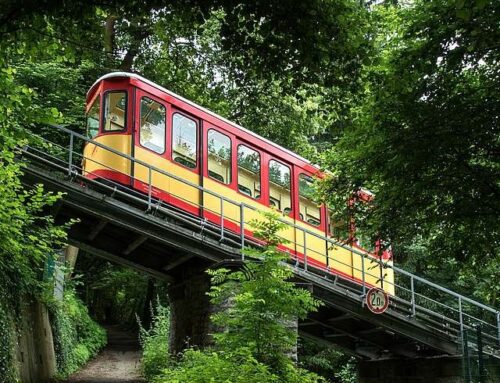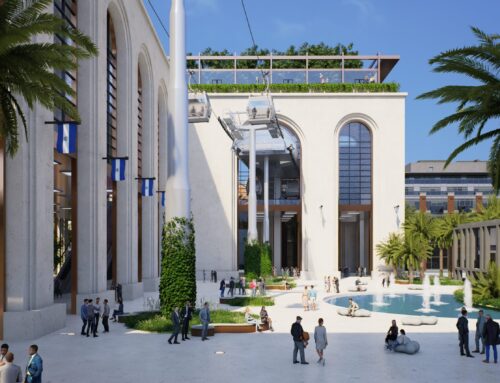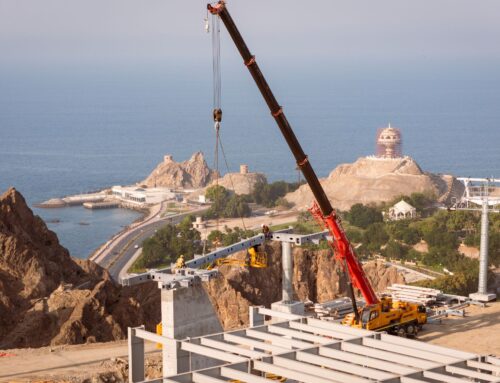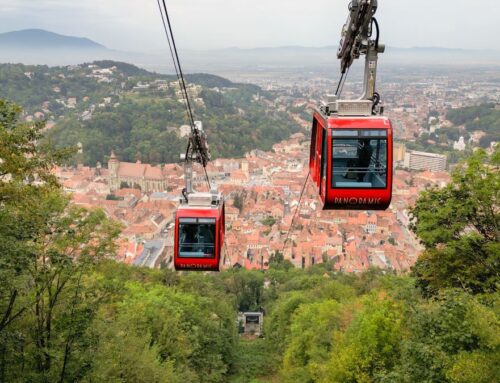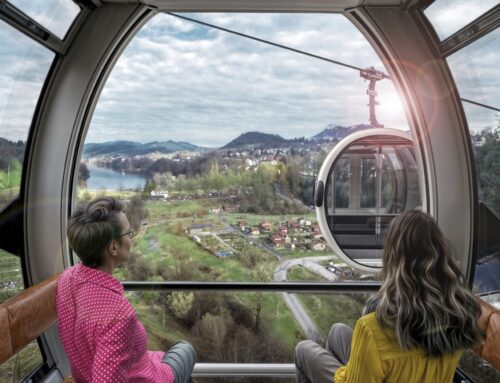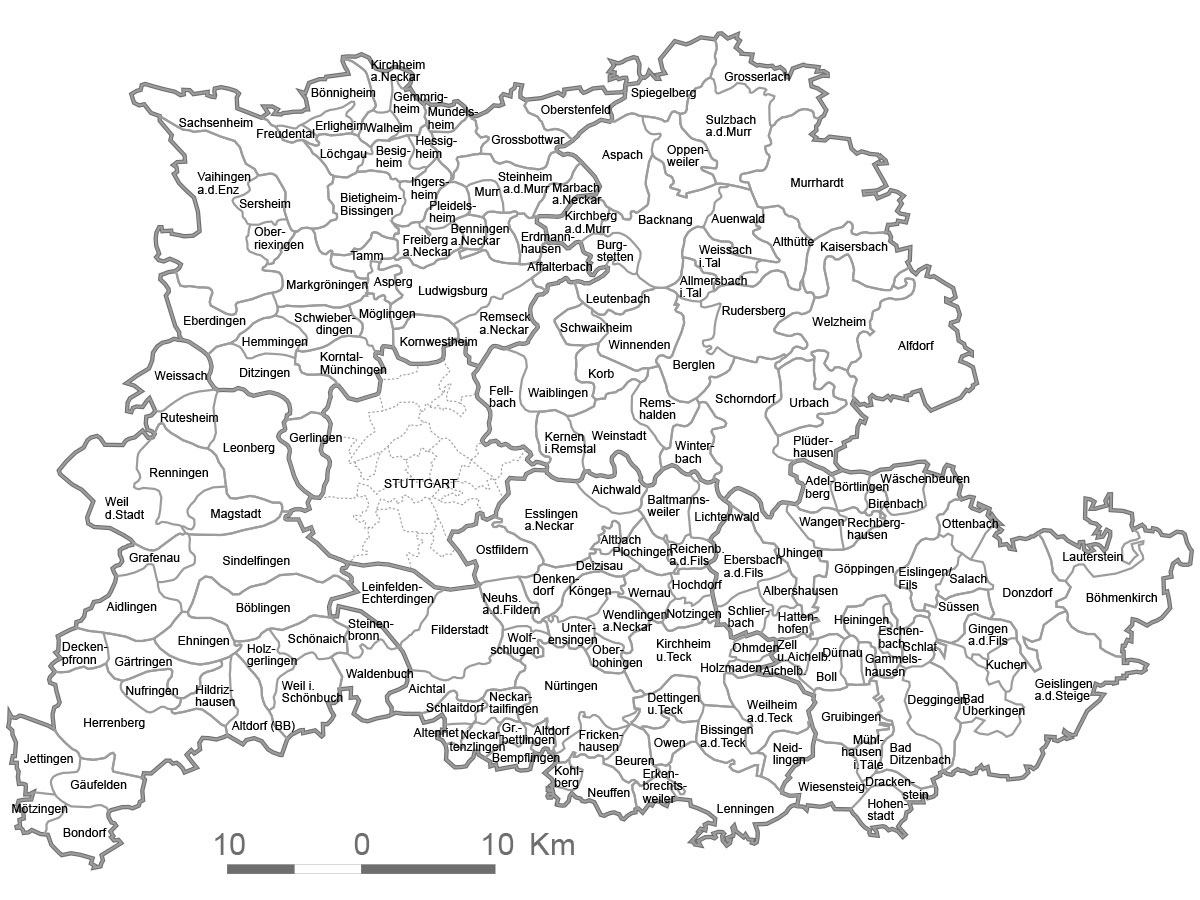
Cities, SI Urban 2/2024
Stuttgart region – a cable car for the area?
In 2018, the Stuttgart Regional Council already pointed out that a large proportion of Stuttgart‘s nitrogen oxide problem is caused by abrasion from car traffic. However, these are not commuters from the city of Stuttgart, but commuters from neighbouring rural communities.
These make up two thirds of the people commuting into the city. The municipality of Kernen-Stetten in Remstal, which borders Stuttgart, is affected by the phenomenon of having the most commuters to the state capital.
Although there is already a rail transport hub between Waiblingen and Esslingen, surveys of the population commissioned by the city show that there is still enormous potential for improvement. This could take the form of an urban cable car.
A cable car connection is particularly suitable when it comes to connecting two end points. According to researcher Florian Wondratschek, however, cable cars are often still associated with small cabins travelling up a mountain and less as a sustainable means of transport.
However, depending on their design (single-cable, tricable gondola or funicular railway), they can offer high transport capacities. In contrast to a rail link, the construction time for a cable car is also significantly shorter (specifically within a year once planning and testing have been completed).

FLORIAN WONDRATSCHEK
Alumni Area Sustainable Mobilities, HfWU Nürtingen-Geislingen
Economical alternative: The urban cable car
There are recommendations for various options to optimise the public transport network in Stetten, albeit with varying implementation times. According to Wondratschek, the quickest way to realise this would be to improve the frequency of the RELEX express bus (X20) by using more buses.
In terms of comfort, congestion and direct climate protection, however, the bus is not the best option. In order to shift the flow of commuters from the road to the public transport network, the city would have to accelerate the expansion of rail transport:
However, the long construction period and the amount of land required for this are deterrents. The only economic alternative in this case is the cable car.
Permanently in operation, there are no waiting times at the station and there are numerous routes available from the Waiblingen and Esslingen junction stations for supraregional connections to Stuttgart.
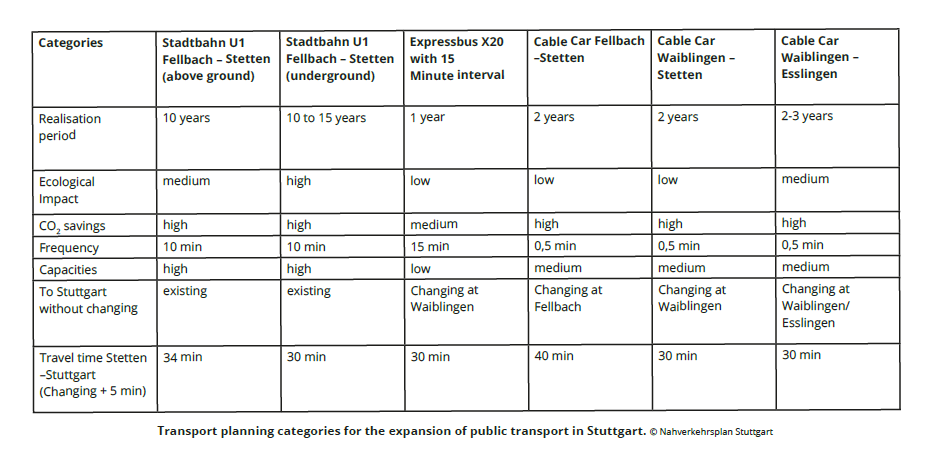
Better access to workplaces
Some workplaces in the surrounding area would benefit from the construction of a cable car. However, this would ideally require separate fine distribution statistics of commuter flows.
Finding a suitable option therefore remains an open question for the time being, as does the question of whether a proposal for a (temporary) cable car extension would be favourably received by the local population.
However, the establishment of the cable car as a new form of mobility is usually associated with challenges in terms of public acceptance.
Examples such as the Roosevelt Island Tramway in New York show, however, that what was originally planned as a temporary means of transport can also become a permanent solution for public transport after the planned construction of an underground was delayed. As it was able to absorb most of the commuter flows, there was no increase in car traffic.
“If we consider the cable car extension as an optimal public transport expansion option for the municipality of Stetten, it gives us hope in a rather greenconservative Baden-Württemberg that such a transport project could be successfully implemented even in Republican-governed New York,“ Florian Wondratschek is convinced.


